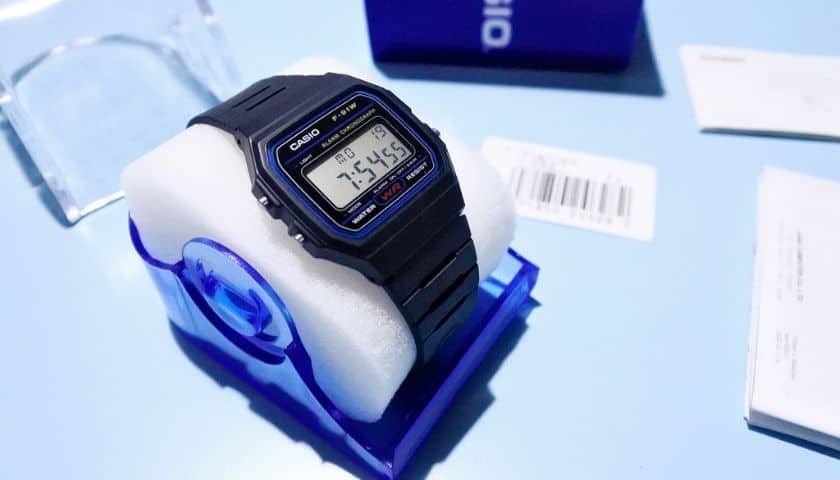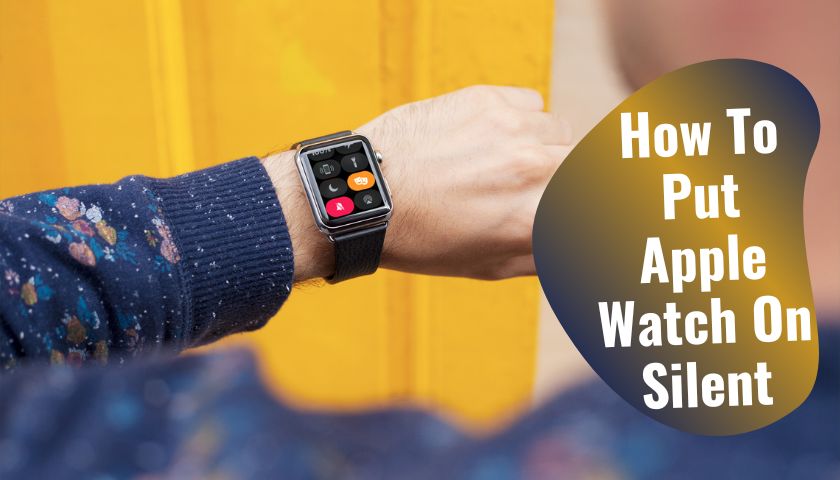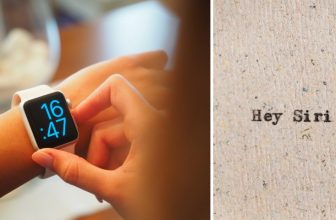How To Use A Watch As A Compass | 2 Methods Described

As an Amazon Associate, I earn from qualifying purchases.
Have you ever thought, what if you find yourself lost on a bleak island or desert, and your compass isn’t with you? This could be bothering you, and one trick can fix the problem: using your hand timer as a compass.
Converting your watch as a directional compass can be possible if you know how to use a watch as a compass. Two ways will be applied to find the right path through the watch-northern and southern hemispheres.
I also described below how you will measure the directions on the analog watch to digital and the bezel watch bands. Therefore, you must have continued this one patiently.
How to Use A Watch As A Compass – How Do They Work?
Conducting a watch as a compass is an old trick, still taught in U.S.A. Army rangers. Although this is a self-rescue process, follow each step carefully to reach the right destination.
Way 1: Follow the Steps If You’re in Northern Hemisphere
The way I am sharing here is worthy of the Northern Hemisphere. But make sure the Sun shines brightly or is properly visible at the top of your head when using this trick. Now, sit down or put the watch on a flat surface. The most indigenous way is to lay the watch parallel to the ground.
Step 1: Pointing out The Shadow
One common trick is finding the southern part from the watch, pointing out the shadow. This could be different for noon and noon. To find the right path from the watch, hold it horizontally and keep the hour’s hand at the Sun.
Step 2: Keep the Hour Hand at The Sun
To find out about the Northern Hemisphere, turn off the watch. If your clock is set to 24-hour format, point out the hour hand at the Sun. From this part, 0 hours will point you to the north.
Step 3: Turn the Hour Hand in Mid 8 & 9
For the 12-hour format, you must think about where the hand would be pointing. For instance, in case the hand timer has 5 pm on a 12-hour watch. Then you would point the midpoint between 8 and 9 to the Sun. And the 12 will mark the Northern parts.
In other words, when you want to trace the direction at 5:30 pm, you should point to the Sun at the midpoint between the middle of the 8 and 9 watch hands.
Step 4: Measure Counterclockwise to Find the Northern Part in the Afternoon
For the afternoon, you must be strategic to find out about the Northern Hemisphere. In the first phase, turn the hour hand 12; this time, try to measure it counterclockwise from the same direction.
But point the hour hand at the Sun, and the north should be located at the 2 O’clock marker. But if this is noon or 6’O clock, the northern part will be traced at the hour hand.
Way 2: Follow the Steps If You’re in Southern Hemisphere
For Southern Hemisphere, the tracing procedures are different from the northern part. But they’re quite easy if you clearly see the Sun and moon.
Step 1: Go to a Place with Clear Views of The Sun
To begin, find a spot from which you can see the spot clearly. I would appreciate it if you held it horizontally. A southern part of any place could be easily found this way.
Step 2: Point out 12′ O Clock
Now, please point out the watch 12’O clock line as I suggest you do for the northern part. But they’re a common difference between the watch’s southern and northern parts. The southern part of the watch is more likely to go and adjust with the sun exposure.
Here, you can use the shadow tricks also to find the Southern Hemisphere by the timer.
Step 3: Hold the Watch & Bisect the Angle
Hold the watch and keep it as if the winds are divided into two. For example, the watch wind between 12 and an hour must be at the right angle.
Step 4: Understand the Measurement in Analog Watch
An analog watch can be pointed at the 12′ O clock, which is probably marked as a southern part. In brief, if anyone positions the watch where the Sun is halfway between the hour hand and 12’O clock, then 12 will point south.
Similarly, the Sun rises at exactly 6 am, and if I point out the 9’O clock right (halfway between the hour hand and the 12 positions), then 9 is your East and 12 points out the South part.
You can repeat this process at 10 am also. Point 11 at the Sun, and 12 will be the South part. At noon, if the sun rays fall perpendicularly on the watch face, then it will be your southern parts.
Important note: The data I use here is based on sun exposure in a different hemisphere. As a result, sun exposure and its empowerment affect different hemispheres differently. Online maps, geographical resources, and globes can be used to acquire a correct path.
How To Use a Digital Watch as a Compass?
For use, a digital wrist timer as a compass follows extra steps along with the process I proclaimed above.
On a sheet of paper, draw a clock face and choose 12 o’clock for the Sun. The middle point between 1 and 2 in the north. When the Sun is very light, the southern part could be at 12, and the north is between 2 and 3′ O clock.
This one could also work as a time-telling device and a well-worthy way of finding out the watch’s northern and southern parts. This process can also apply to the watch with bezels or a little watch wind box inside the glass.
What Are the Limitations When Using a Watch As A Compass?
Many researchers recommend using something other than such a way to find the right part of any state or island, in the ocean. Because it is often found defective due to certain limitations, and one must learn them.
1. Rough Weather & Cloud Days
You may only be able to use the sun ray method if the weather is smooth. In this situation, one might wait for a clear day and sunny daylight. However, there is a simple trick by which anyone can locate the right direction in cloudy weather.
Pick a pencil or stick, and lay it vertically over the ground. This stick or pencil will cast a shadow indicating the Sun’s position. Casting shadow by pencil may not appear if the sky is covered by heavy clouds or excessive rainfall.
2. Limitation Of Equator
If you’re using the watch compass near the equator, there is a high chance of getting inaccurate results all the time. The Sun is also an issue since they’d come with two solar maxima. Due to the equator impacts, a person can only trace the north and south poles properly.
To get a satisfactory result, one must acquire a good knowledge of the Sun’s position throughout the year. Without that knowledge, you can go for the shadow method.
3. Daylight Savings Issue
Try to set up the watch daylight savings time for at least one hour before using it as a compass. It is because you cannot stop the natural norms of the earth’s rotation and paths around the Sun. It doesn’t care or waited for the extra hour which some extra areas added themselves.
4. Inaccuracy Of Zonal Time
We must acknowledge the fact that regional time varies on zonal facts. The northern and southern parts are divided into 24 broad time zones into some areas. In fact, these zonal distinguishing matter a lot while conducting a wristwatch as a compass.
Therefore, the watch and sun process method is the only way to cope with difficult situations. But it needs to be more accurate and good enough for most situations.
5. Seasonal Base Results
Another limitation of the watch compass is its seasonal impact. For example, I can say about the above method used in an analog watch.
The method I described here about sun exposure or shadow will give you better results in Autumn and spring. A foggy winter or snowy weather may not be able to give the outputs at all.
Frequently Asked Questions (FAQs)
How Accurate Is Using a Watch as a Compass?
The compass watch’s accuracy depends on the position of the Sun. If frankly tell, those methods aren’t 100% accurate since there are always some limitations due to the geographical and equators. Sometimes a person may mistakenly choose the wrong path for these issues.
How Do You Tell the Direction with A Watch?
To tell the direction with a watch, hold it horizontally. The watch-out is the position of the full wind. If the sun exposure directly fell upon the 12’O clock, then half the distance between 3’O clock and 1’O clock will be pointing directly south. And 8’O clock will be pointing directly north.
How Do You Find North with a Watch?
Hang or hold the watch horizontally, then keep it aligned with the noon marker along the Sun. A northern part could be found at the halfway point between the hour and 12:00 mark. Thus, anyone can easily find out the north part from the hand timers.
How Do You Find North with a Watch at Night?
It is challenging to find the north at night without sun exposure. But there is another way named Polaris found in the night sky. With the help of a Polaris, tracing the northern part becomes facile. But before using it, find the big dipper, then try to find the two stars at the outer edge of the dipper’s bowl.
Of course, watch compasses help trace the way to the person lost in the wilderness or adrift at sea. Finding the right direction on the unknown island becomes more convenient and possible with a simple trick using a watch compass.
Finally, those who lead adventurous lifestyles should learn how to use a watch as a compass and keep many ideas in mind. This is the quickest way to survive in an unknown place because the watch numbers are very handy, and the exposure to daylight makes it more innovative.
This method consists of just one simple step that gives the user the right direction. Picking the hour hand number double is always the trick. This is due to the fact that the earth and sun rotate once a day, but the hour hand of the clock rotates twice.
So, the hour hand moves twice before the interval of daytime. Apply this trick to know the exact position of your current locations’ East, west, north, and South poles.
As an Amazon Associate, I earn from qualifying purchases.
- 9 Best ABC (Altimeter, Barometer, Compass) Watches Of 2025 - July 5, 2023
- How to Get Rid of Watch Rash Instantly | Learn 7 Excellent Ways - June 2, 2023
- How to Set up And Use Apple Pay on Apple Watch to Pay Easily - May 17, 2023






